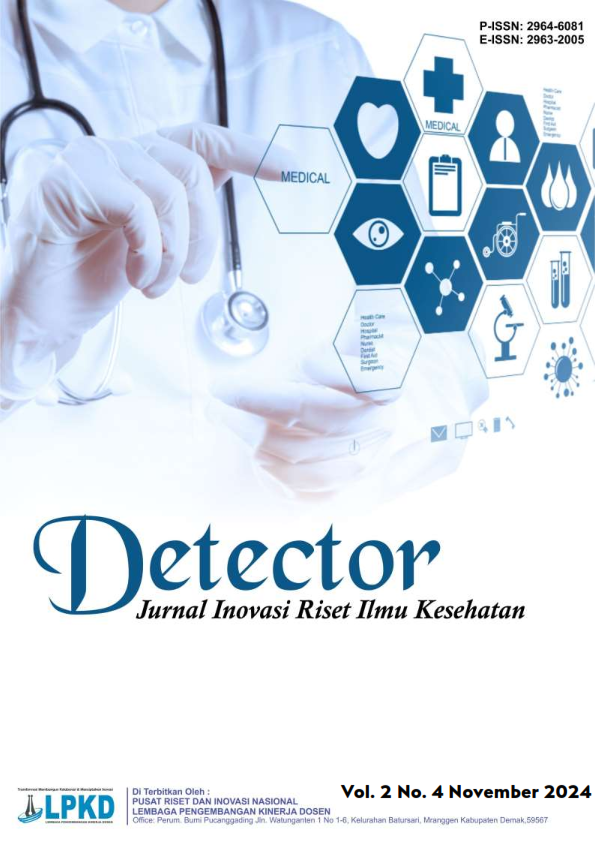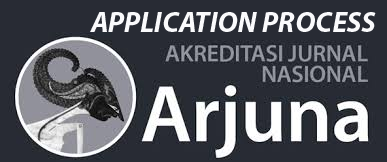Intention To Visit The Executive Polyclinic Of The Dr. Sitanala Central General Hospital: A Review Of The Theory Of Planned Behavior
DOI:
https://doi.org/10.55606/detector.v2i4.4380Keywords:
Body Image, Subjective Norms, Attitude, Intention to VisitAbstract
Executive polyclinic in the hospital provides premium health services for middle to upper-socioeconomic patients. However, the low utilization of executive polyclinic services is a concern for hospital management. This study uses the Theory of Planned Behavior framework to understand the factors that influence patient intention to visit the executive polyclinic. This study aims to analyze the effect of subjective norms and brand image on visiting intentions through attitudes toward visiting the Executive Polyclinic of dr. Sitanala Central General Hospital. The quantitative causal research method is to determine the relationship between variables based on previous hypotheses. Data were collected through questionnaires from 135 patients and visitors who had never visited the Executive Polyclinic of dr. Sitanala Central General Hospital was selected using Stratified Random Sampling. The analysis was carried out using SEM-PLS. The results showed that subjective norms and brand image influenced visiting attitudes and visiting intentions, and visiting attitudes influenced visiting intentions. In addition, attitudes mediate the influence of subjective norms on visiting intentions and brand image on visiting intentions. In a managerial context, this research can be a basis and reference for hospital management to improve communication and information systems, human resource (HR) management for medical personnel, patient experience management systems, and patient education systems.
Downloads
References
A. Dash, “Exploring visit intention to India for medical tourism using an extended theory of planned behavior,” J. Hosp. Tour. Insights, vol. 4, no. 4, p. 418–436, 2020.
A. de la Hoz-Correa and F. Muñoz-Leiva, “The role of information sources and image on the intention to visit a medical tourism destination: a cross-cultural analysis,” J. Travel Tour. Mark., vol. 36, no. 2, p. 204–219, 2019.
A.H. Eagly and S. Chaiken, The Psychology of Attitudes, vol. 7, no. 2.New York: Harcourt Brace Jovanovich College Publishers, 1993.
DG Abin, DW Mandagi, and LS Pasuhuk, "Influence of brand image on customer attitude, intention to purchase and satisfaction: the case of start-up Brand Pomie Bakery," Enrich. J. Manag., vol. 12, no. 5, p. 3908–3917, 2022.
G. Pourmand et al., “An application of the theory of planned behavior to self-care in patients with hypertension,” BMC Public Health, vol. 20, no. 1, p. 1–8, 2020.
H. Wang, J. Zhao, Y. Wang, and Y. Hong, “Study on the formation mechanism of medical and health organization staff's emergency preparedness behavioral intention: From the perspective of psychological capital,” Int. J Environ. Res. Public Health, vol. 18, no. 16, 2021.
HS Saragih and P. Jonathan, "Views of Indonesian consumers towards medical tourism experience in Malaysia," J. Asia Bus. Stud., vol. 13, no. 4, p. 507–524, 2019.
I. Ajzen, “The theory of planned behavior,” Organ. Behav. Hum. Decis. Process., vol. 50, no. 2, p. 179–211, 1991.
J. Hair, GT Hult, C. Ringle, and M. Sarstedt, A Primer on Partial Least Squares Structural Equation Modeling (PLS-SEM) - Joseph F. Hair, Jr., G. Tomas M. Hult, Christian Ringle, Marko Sarstedt. 2017.
JF Hair, WC Black, BJ Babin, and RE Anderson, Multivariate Data Analysis. United Kingdom: Cengage Learning, 2018.
KL Keller, “Conceptualizing, Measuring, and Managing Customer-Based Brand Equity,” J. Mark., vol. 57, p. 1–22, 1993.
L. Deng, Q. Ye, D. P. Xu, W. Sun, and G. Jiang, “A literature review and integrated framework for the determinants of crowdfunding success,” Financ. Innov., vol. 8, no. 1, 2022.
M. Boguszewicz-Kreft, S. Kuczamer-Kłopotowska, A. Kozłowski, A. Ayci, and M. Abuhashesh, “The theory of planned behavior in medical tourism: International comparison in the young consumer segment,” Int. J Environ. Res. Public Health, vol. 17, no. 5, p. 1–17, 2020.
M. Fishbein and I. Ajzen, “Belief, Attitude, Intention and Behavior: An Introduction to Theory and Research,” Journal of Business Venturing, vol. 5, no. 3. Addison-Wesley, London, 1975.
M. Samiyah, U. Hadi, WJ Pudjiraharjo, Y. Probowati, TN Rochmah, and D. Chalidyanto, "The Effect Of Intention On ThePerformance Of Work Units In Patient Safety In Indonesia: Linear Regression Analysis,” Syst. Rev. Pharm., vol. 12, no. 1, p. 1185–1189, 2021.
P. Bastani, M. Javanbakht, and R. Ravangard, “Predicting the Potential Patients' Intention to Select Healthcare Service Providers: Application of Structural Equation Modeling Based on the Theory of Planned Behavior,” Open Public Health J., vol. 12, no. 1, p. 472–481, 2019.
P. Pahrudin, CT Chen, and LW Liu, “A modified theory of planned behavior: A case of tourist intention to visit a destination post pandemicCovid-19 in Indonesia,” Heliyon, vol. 7, no. 10, p. e08230, 2021.
R. Agustin, S. Hendriani, and Syapsan, "The Effect of Brand Image and Service Quality on Purchase Decision With Word of Mouth as Mediating Variable at Prof. Dr. Tabrani Hospital Pekanbaru," IJEBA Int. J. Econ. Bus. Appl., p. 25–44, 2020.
S. Al Hasan, JM Muzumdar, R. Nayak, and WK Wu, “Using the Theory of Planned Behavior to Understand Factors Influencing South Asian Consumers' Intention to Seek Pharmacist-Provided Medication Therapy Management Services,” Pharmacy, vol. 7, no. 3, p. 88, 2019.
S. Chaulagain, A. Pizam, and Y. Wang, “An Integrated Behavioral Model for Medical Tourism: An American Perspective,” J. Travel Res., vol. 60, no. 4, p. 761–778, 2021.
TA Shimp and JC Andrews, Advertising, Promotion, and other aspects of Integrated Marketing Communications, 10th ed. United States of America: Cengage Learning, 2018.
TH Cham, BL Cheng, MP Low, and JBC Cheok, “Brand image as the competitive edge for hospitals in medical tourism,” Eur. Bus. Rev., vol. 33, no. 1, 2021.
TH Cham, YM Lim, BC Sia, JH Cheah, and H. Ting, “Medical Tourism Destination Image and its Relationship with the Intention to Revisit: A Study of Chinese Medical Tourists in Malaysia,” J. China Tour. Res., vol. 17, no. 2, p. 163–191, 2021.
WY Wu, TY Do, PT Nguyen, N. Anridho, and MQ Vu, “An integrated framework of customer-based brand equity and theory of planned behavior: A meta-analysis approach,” J. Asian Financ. Econ. Bus., vol. 7, no. 8, p. 371–381, 2020.
Y. Sun et al., “Predicting Rural Women's Breast Cancer Screening Intention in China: A PLS-SEM Approach Based on the Theory of Planned Behavior,” Front. Public Heal., vol. 10, no. April, p. 1–14, 2022.
Y. Zhou, L. Liu, S. Han, and X. Sun, “Comparative analysis of the behavioral intentions of potential wellness tourists in China and South Korea,” Humanit. Soc. Sci. Commun., vol. 10, no. 1, p. 1–13, 2023.
Downloads
Published
How to Cite
Issue
Section
License
Copyright (c) 2024 Detector: Jurnal Inovasi Riset Ilmu Kesehatan

This work is licensed under a Creative Commons Attribution-ShareAlike 4.0 International License.








